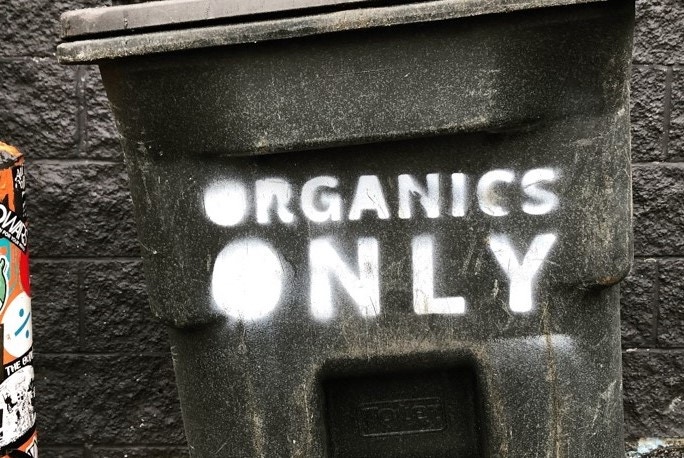
Earlier this year, Ashley Rodriguez wrote an article on composting coffee grounds in the café or at home. But with more of us brewing more coffee than usual, what can we do with leftover coffee grounds at home?
Last year when I was living in Kenya, I recycled my used coffee grounds in jars placed in the corners of my home to help repel mosquitos. (Mosquitos don’t like the scent of coffee grinds!) Now that I’m back in Canada, I still use my morning coffee grounds for many purposes. But wherever you find yourself in the world, if you’re brewing coffee at home, you can reuse your grinds for many purposes. Here are some ideas.
Kitchen
Coffee grounds are so useful in the kitchen. They make an ideal scourge to wash off food if it’s stuck on pots or pans.
Leftover grinds can also absorb all kinds of kitchen odors. After chopping an onion or grating a garlic, I use coffee grounds to get rid of the smell on my hands. And while my non-coffee drinking mother always used baking soda to absorb smells in our refrigerator as I was growing up, I use uncovered coffee grounds in a small tin can. (Just make sure you put them in your fridge after they’re dry.) I also put a tin can (I use empty soup cans) of coffee grounds near any trash can – just replace the grounds after 1 or 2 weeks or they get moldy.
Garden
Now that I’m back in Nova Scotia, I don’t have a garden. But since coffee grounds are filled with nutrients like nitrogen that can promote growth for plants, I asked two coffee professionals about the ways they use leftover coffee grinds in their gardens.
Jill Hoff, Canadian Barista Champion, Education Director at Monogram Coffee and Urnex Ambassador, enthusiastically shared that she uses them both in her indoor and outdoor gardens at her Calgary home. “Sprinkle sparingly,” she advises. “If you put too many grounds directly on the top of the soil, it might hinder water absorption (since coffee grounds can absorb a lot of water).” Another one of Jill’s secret tips is to make a ‘coffee tea’ fertilizer from leftover coffee grounds. To make this, she advises to use two tablespoons of coffee grinds for a litre of water: “Steep the grounds in water overnight and then use this “coffee tea” to fertilize your plants.”
In London, Emma Haines, founder of Caffeina Consulting, also sprinkles used coffee grinds in her garden. “The roses especially like the coffee grounds,” she told me. “They seem to love specialty coffee as much as I do.”

Body
Coffee grounds don’t just stimulate healthy growth of your plants. They can also help to stimulate healthy hair and skin.
While I use leftover coffee grounds to exfoliate my skin (especially on my feet and elbows) in the shower, Regine Guion-Firmin, founder of Karibu Kahawa Camps in Kenya and an SCA authorized trainer, takes her passion for coffee two steps farther: she creates her own coffee oil and her own coffee soap in her Nairobi home.
She told me that her “Coffee Infused Coconut Oil” is “beneficial for natural afro hair. And coffee oil on dry skin gives a boost of the blood circulation even under the skin.” To make her coffee oil, she uses a glass jar to mix “organic coconut oil; organic roasted and ground coffee, and organic pomelo. Shake it daily; let it sit for 1-2 weeks, then filtrate and use on your hair or skin.” If you don’t have a pomelo fruit (a large citrus fruit native to southeast Asia), you might experiment with other citrus fruits (the grapefruit is a cross of pomelo and sweet orange).
If you live near a good farmer’s market, you might find coffee soap made by artists, but you can also make coffee soap at home. Regine’s recipe combines her “Coffee Infused Coconut Oil” with olive oil, macadamia oil, sunflower oil, and more leftover ground coffee with water and caustic soda. You’ll need more materials such as soap plates, but you can find the full recipe here.
Crafts
If you have kids at home, leftover coffee grounds make an excellent brown dye. You can make coffee-stained paper and create a vintage-looking story book out of coffee-stained paper, or use them to tan Easter eggs.
If you want to try something more ambitious, use coffee grounds to make coffee clay or even candles – although you’ll need to purchase additional materials for this.
Even if you are brewing for just one person, reusing your grinds can make a difference; beyond the benefit of composting, used coffee grinds can provide many benefits at home.
And who among us would complain about our kitchens or our gardens smelling like coffee?
About the Author
Born and raised in Los Angeles, Erika Koss now lives in Nairobi, Kenya, where she is a Research Associate at the University of Nairobi. In 2018, she launched “A World in Your Cup” out of Halifax, Nova Scotia, where she is also a PhD candidate in International Development Studies at Saint Mary’s University. Erika’s research centers on gender equity, sustainability, and resilience in the global coffee trade, particularly in East Africa. A former barista and Re:Co fellow, Erika is also a SCA-certified AST for Introduction to Coffee and the Sustainability Coffee Skills programs. Other career highlights include working at the National Endowment for the Arts in Washington, DC; the National Steinbeck Center in Salinas, California; and as an assistant dean at Northeastern University. She has taught literature, writing, and politics at several universities. She holds a B.S. from The Master’s College; an M.A. in English literature from San Diego State University; and an M.A. in Political Science from Northeastern University. She is a regular contributor to several coffee magazines and is working on her first book. Read more on her website www.AWorldinYourCup, or follow her on Instagram @aworldinyourcup.

